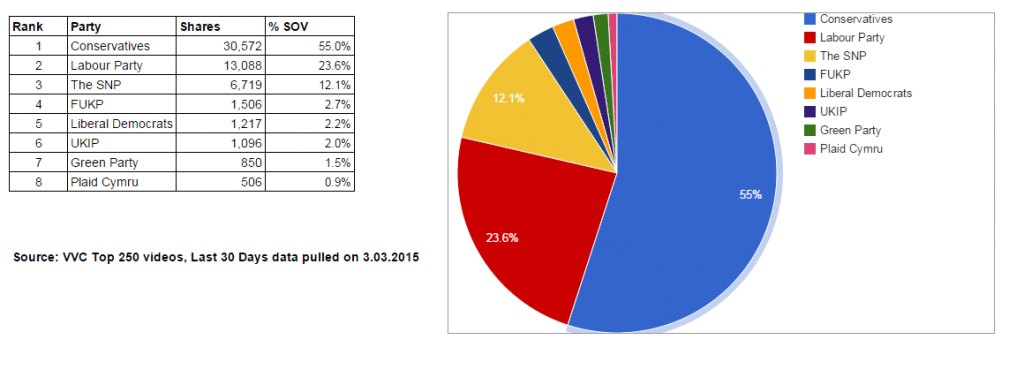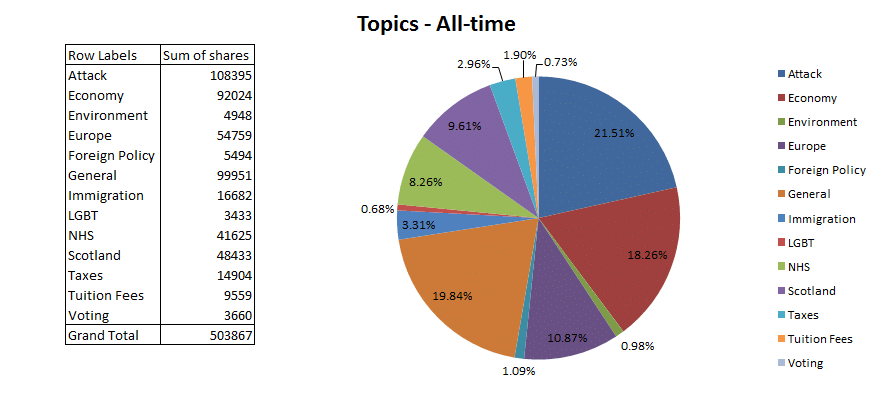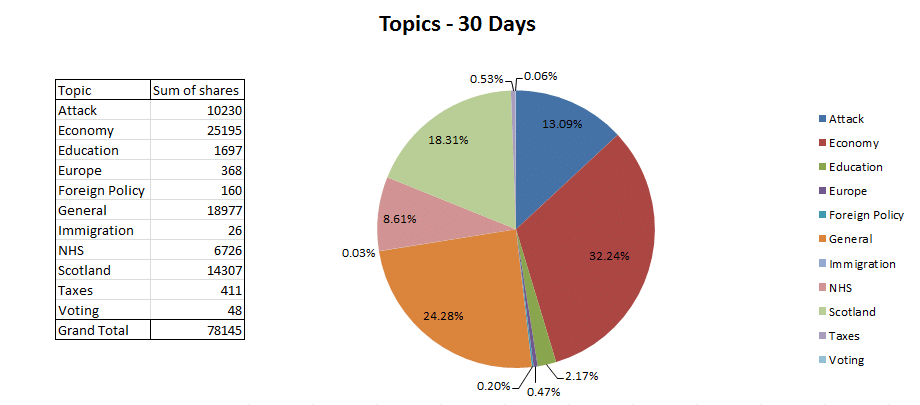General Election 2015: Conservatives Winning The Online Video Ad Race
The UK’s next General Election is only a couple of months away. With the voter registry closing in April and the televised debates expected to occur throughout that month, we’re about to enter the most frenzied period of the electoral calendar.
While our traditional media outlets typically become swamped with election coverage, Brits aren’t all that used to political advertising. Compared to our American cousins, whose bombastic electioneering shares ad blocks with soft drink commercials, the UK’s policies on political advertising on TV largely swaddles us from the major parties’ marketing budgets. But this is changing.
Earlier this month, the BBC asked if 2015 will be the UK’s first social media election. The question was prompted by the Conservatives’ confirmation that the party is spending an unspecified amount on highly-targeted targeted YouTube ‘attack’ ads, a trend that’s seen each party adding more videos to their social profiles by the day. After all, the same restrictions do not extend to online video.
With nearly 350,000 people actively ‘liking’ the Conservatives on Facebook and UKIP boasting 22,000 YouTube subscribers, political parties’ online profiles are becoming ever more hotly contested.
Of course, the best measure of user engagement is neither views nor subscriptions, but shares, as views tend to be more indicative of media spend. Using the Unruly Viral Video Chart, we have analysed sharing data from online ads produced by the major parties. These include shares of YouTube, Facebook and Vimeo videos across Twitter, Facebook and the blogosphere.
Unsurprisingly, the results say a lot about who’s winning the online popularity contest, but also the issues each party is focusing their marketing energies on.
Who’s winning?
Collating data from the YouTube channels’ of all the major parties in the UK, the all-time sharing of the top hundred videos paints a fairly vivid picture of the last few years in British politics.
UK Election 2015 chart – all time shares
As we can see, all-time sharing figures of the top 250 videos currently put Labour slightly ahead of the Conservatives. Accounting for more than 54% of all-time shares between them, the election front-runners are trailed by UKIP at 16.9%, edging out the Scottish National Party by 5.8%. The SNP’s strong showing was undoubtedly spurred by the discussion around Scottish independence that dominated much of 2014. Filling out the rest of the chart is the Green Party (8.2%) and Nick Clegg’s Liberal Democrats (3.9%), who must be a little humiliated to fall behind Al Murray’s parody movement, Free United Kingdom Party at 5.1%. Wales’ Plaid Cymru manages just 0.5%.
However, this picture changes as we get closer to election day.
Examining the top 250 political ads shared in the last 30 days, a few major shifts become clear.
UK Election 2015 – last 30 days
 Compared to the all-time figures, sharing data of the top 250 videos of the last 30 days shows the Conservatives taking a decisive jump forwards, attracting 55% of the total sharing. Perhaps a result of the party’s social media targeting (or ‘attack style’ focus on undermining Miliband’s efficacy), 7 of the top 10 ads belong to Cameron, according to our Election 2015 Ads Chart.
Compared to the all-time figures, sharing data of the top 250 videos of the last 30 days shows the Conservatives taking a decisive jump forwards, attracting 55% of the total sharing. Perhaps a result of the party’s social media targeting (or ‘attack style’ focus on undermining Miliband’s efficacy), 7 of the top 10 ads belong to Cameron, according to our Election 2015 Ads Chart.
Online media spend in key marginals has been a key strategy for Cameron’s party – and by the looks of it it’s paying dividends.
Political parties putting out video content on their own channels will only get them so far. They are essentially preaching to the choir, reaching out to their own subscribers, who are no doubt card-carrying party supporters already. This is why it’s essential that parties spread their net further using highly-targeted media campaigns.
As the Conservatives have surged forward in sharing, Labour has fallen back to 23.6%, with only one ad cracking the top 10. This puts them only slightly ahead of the SNP, whose diligent social media presence boosts their share to 12.1%.
Despite party leader Nigel Farage’s media ubiquity, UKIP’s recent share dips to just 2.0%. Meanwhile, the Liberal Democrats’ share also drops to 2.2%, but at least they overtake The Green Party, whose share drops to 1.5%. Plaid Cymru are last with 0.9%.
What are parties talking about?
Breaking down party advertisements by topic also tells us a lot about the political zeitgeist. By ranking ads which discuss the economy, or education or Europe, we can learn about what issues parties think the British public care about and, by extension, what the public actually care about. Call it voting with the share button.
A note on methodology: ads, or clips of lengthy speeches, which cover a variety of political issues are listed under the label ‘General’. For the purposes of this analysis, we’ve defined ‘attack’ ads as spots which propose an ad hominem attack on an opposing candidate, but may address other issues.

Though the Conservatives’ new focus on attack ads has proven controversial (not least for their lack of originality), that doesn’t mean the method isn’t working. With 21.51% of the top 100 all-time shares, these incendiary spots are the most shareable of the bunch, closely followed by ‘General’ ads at 19.84%.
Behind these, the issues the social web are sharing the most were the economy (18.26%), Europe (10.87%), Scotland (9.61%), the NHS (8.26%) immigration (3.31%), taxes (2.96%), tuition fees (1.90%) and foreign policy (1.09%). Topics like the environment, voting and LGBT rights trailed with less than 1% of shares each.
While attack ads are the most popular style of political ad, clearly the economy and Europe are, in the long-run, the hot-button issues driving sharing.

Taking data from the last 30 days, we can compare how the relative importance of these issues has shifted. Topics like the economy (32.24%) and Scotland (18.31%) have surged forward, with slight boosts for the NHS (8.61%) and new appearance from education (2.17%).
With recent opinion polls only placing a few percentage points between Labour and Conservatives, advertising (in conjunction with the live debates) will only become more decisive in this race. From our findings, we predict that the economy, Europe, Scotland and the NHS will be high on the agenda.
Check back at the Unruly blog for more election coverage in the coming weeks and months.
